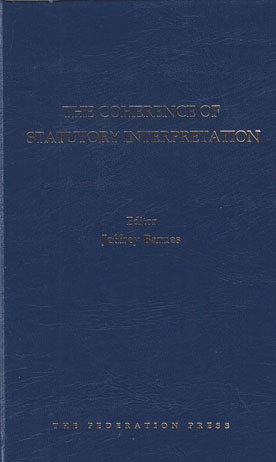
Statutory interpretation — the law governing the determination of the meaning and effect of legislation — is a major area of law. Indeed, with the rise of legislation as a source of law, it has come to dominate legal practice. Yet statutory interpretation has sometimes been derided by commentators.
Is this criticism fair? Is the law in a state of disrepair? Or have its strengths and its inherent limitations been overlooked? This book critically examines, from multiple perspectives, the coherence of the principles and practice of statutory interpretation. The main questions it addresses are: is the law coherent and if so, what are those respects? And if in certain respects it is not coherent, how and why has this come about?
Specifically, the book examines whether statutory interpretation has constitutional foundations and whether these lend coherence. It explores whether legislative drafting can anticipate statutory interpretation and whether this background aids coherence. It asks whether statutory interpretation has a coherent overall method. And it examines several important aspects of statutory interpretation to see whether reliance on them aids coherence. These aspects include the text of legislation, and whether it limits the judicial role; the presumption that Parliament intends the legislative purpose be promoted; Acts Interpretation Acts; and objects provisions.
The contributions to the collection are written by distinguished commentators with expertise in statutory interpretation, including judges, barristers, Crown Counsel, parliamentary counsel, and academics.
Examining coherence has the potential to bring significant benefits to the law and the wider community. To the extent the law of interpretation is found to be coherent, the examination increases the confidence in the judiciary and the administration of the law. To the extent it is not coherent, it produces material for consideration as to its improvement.